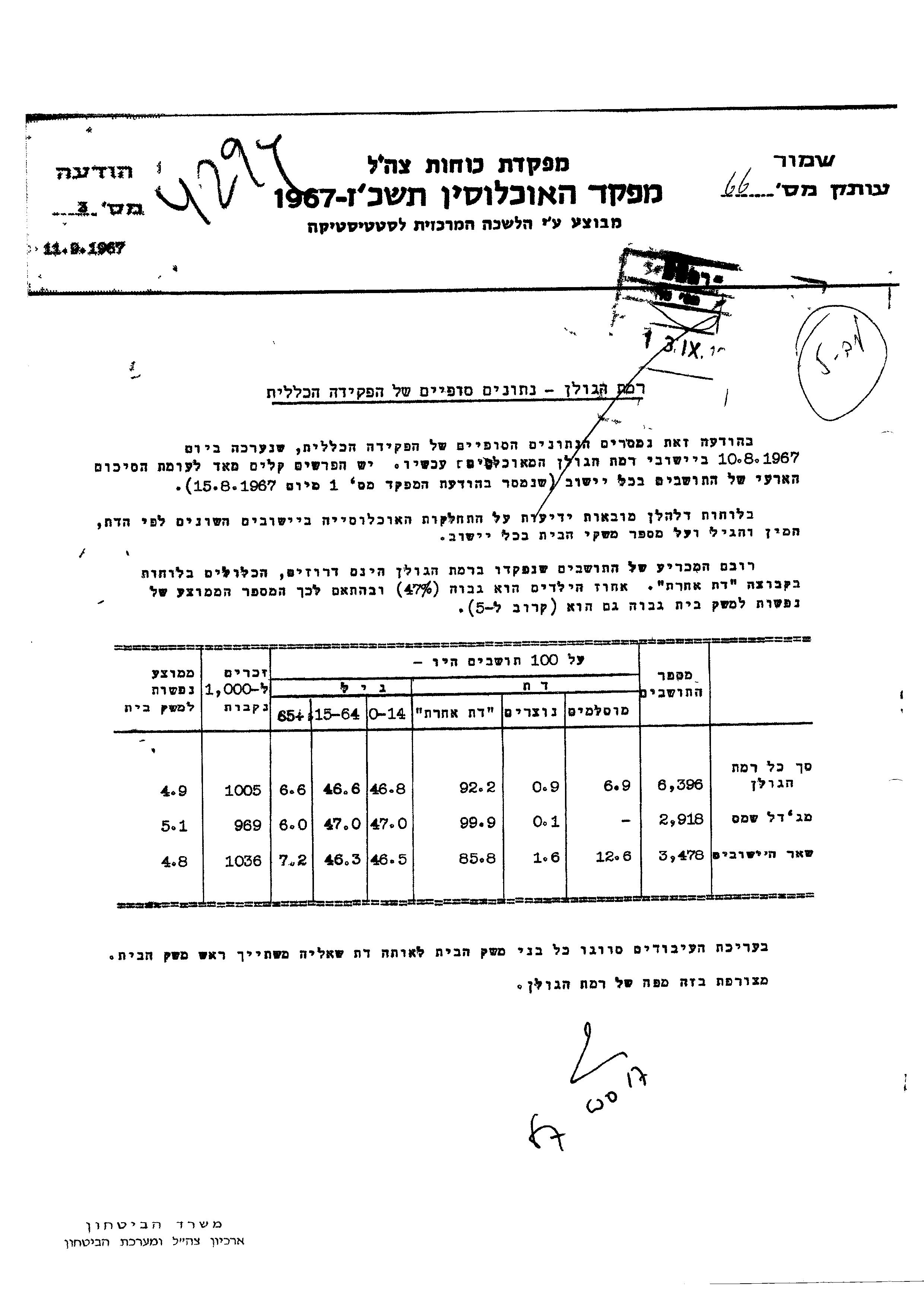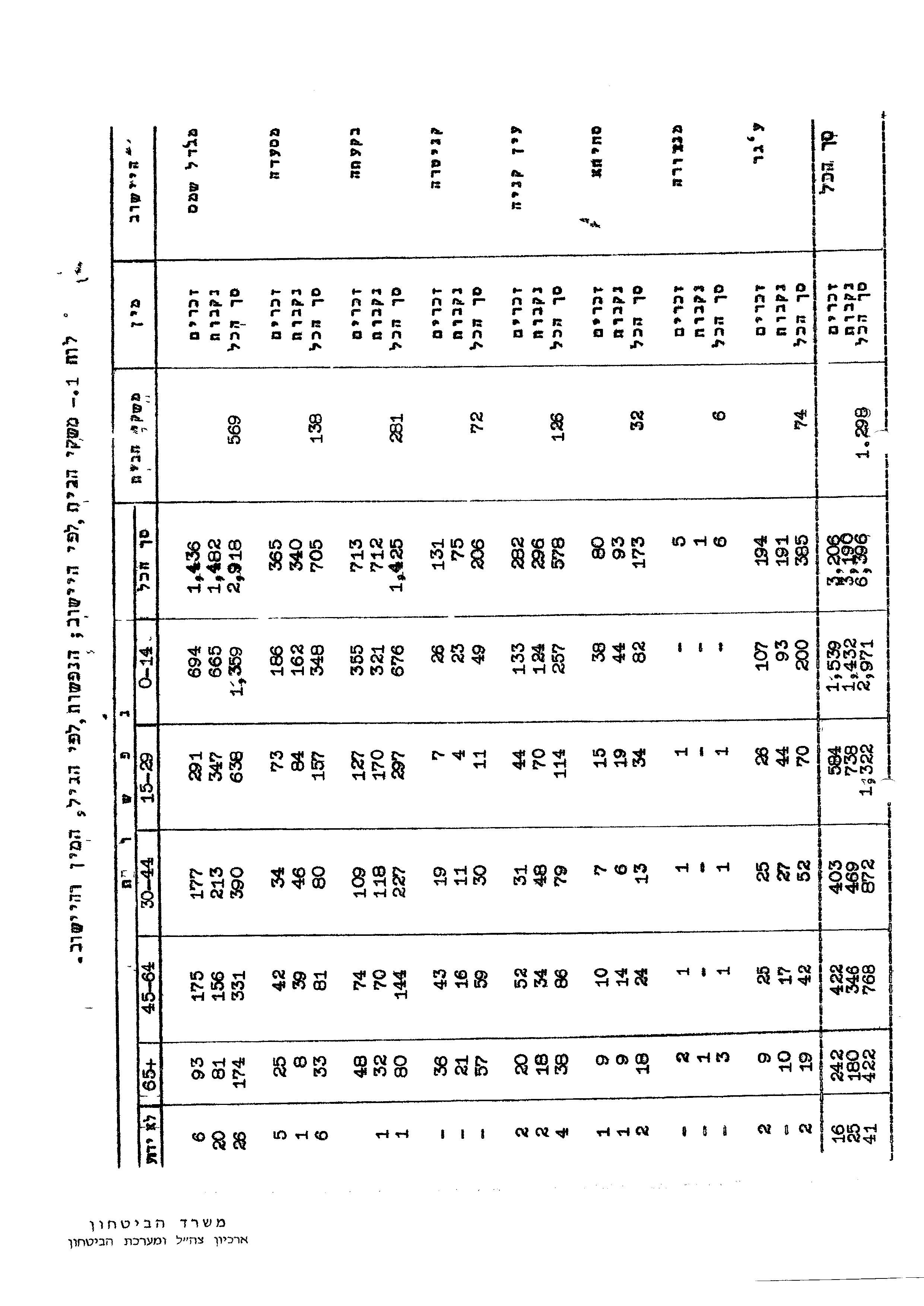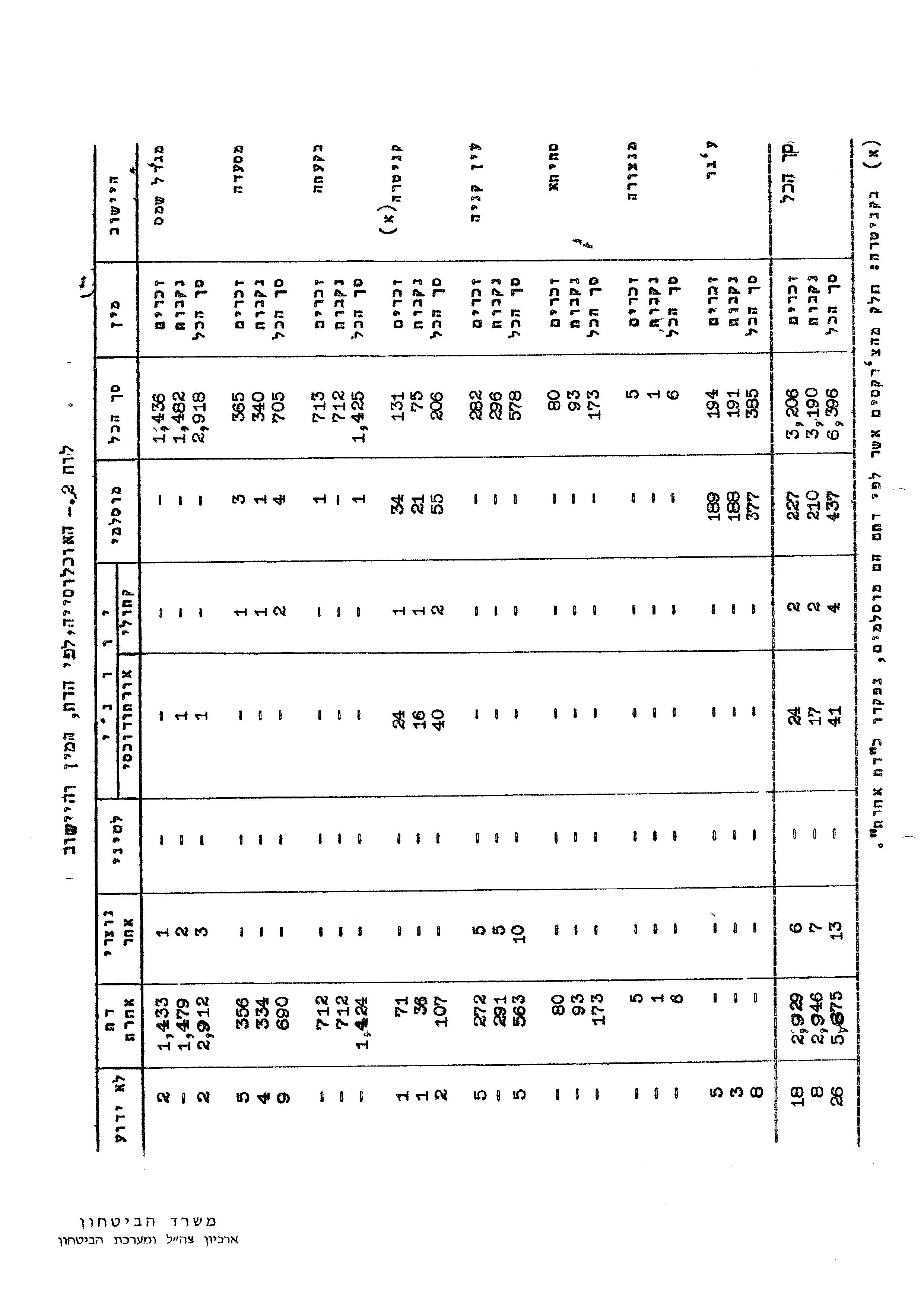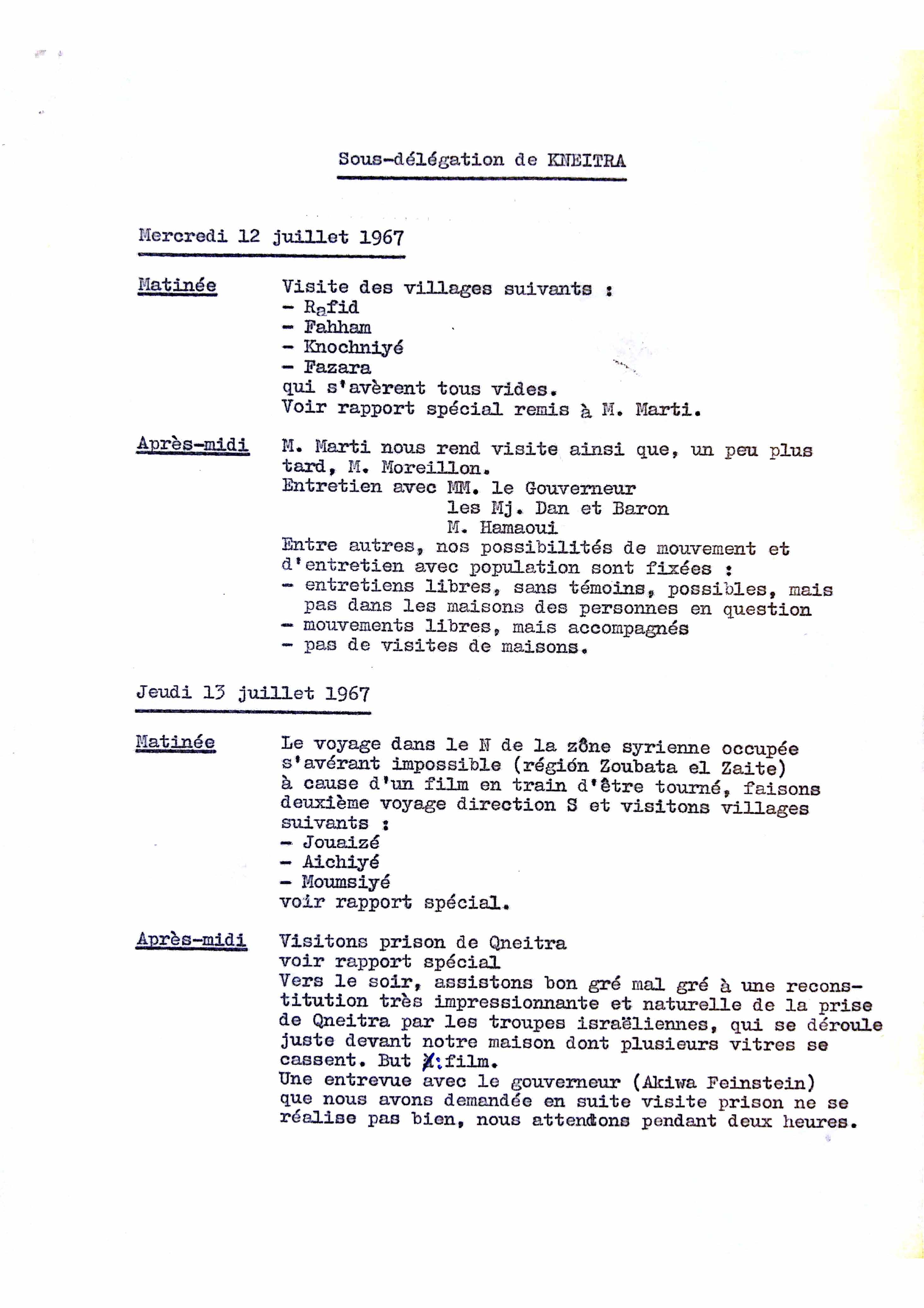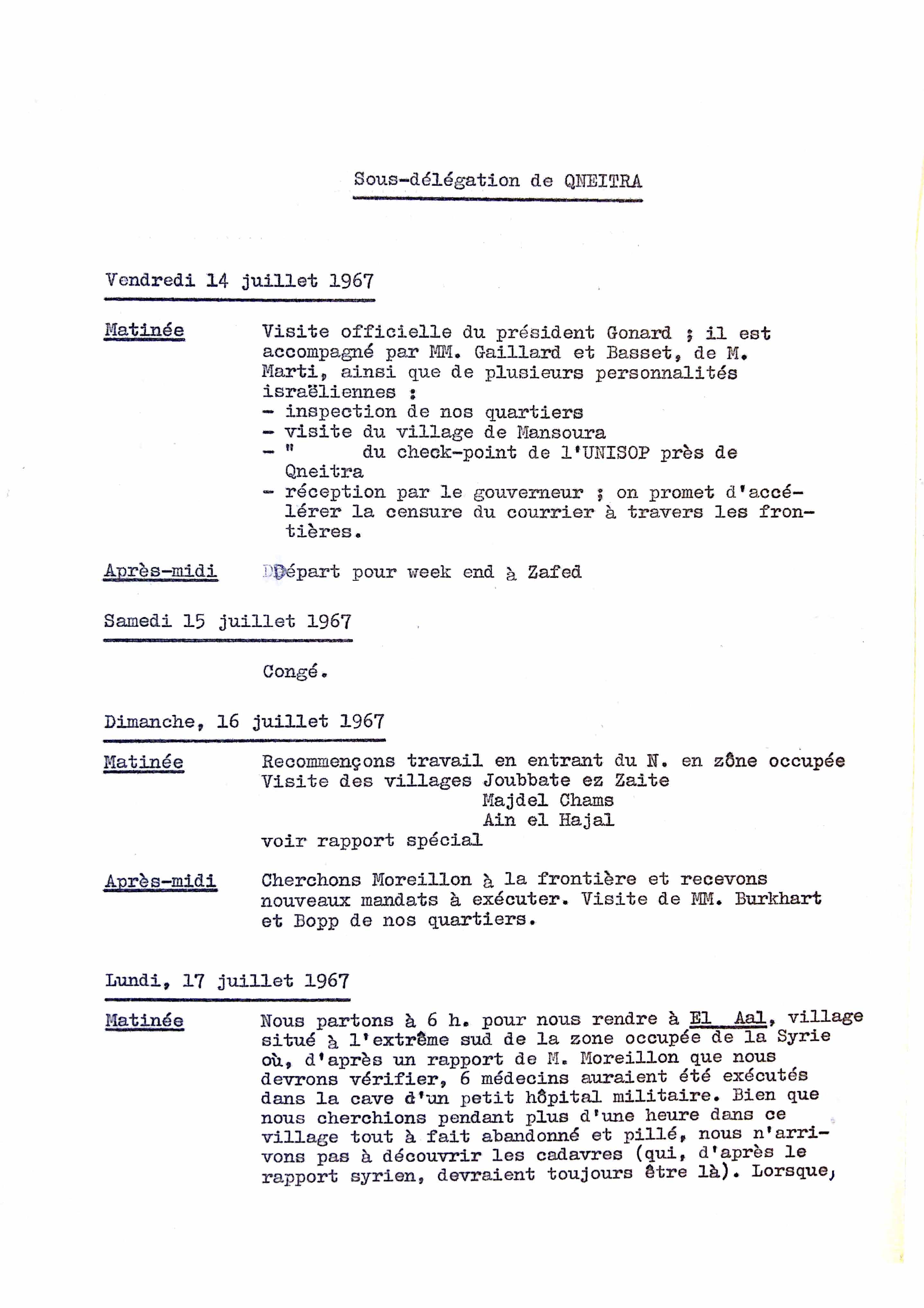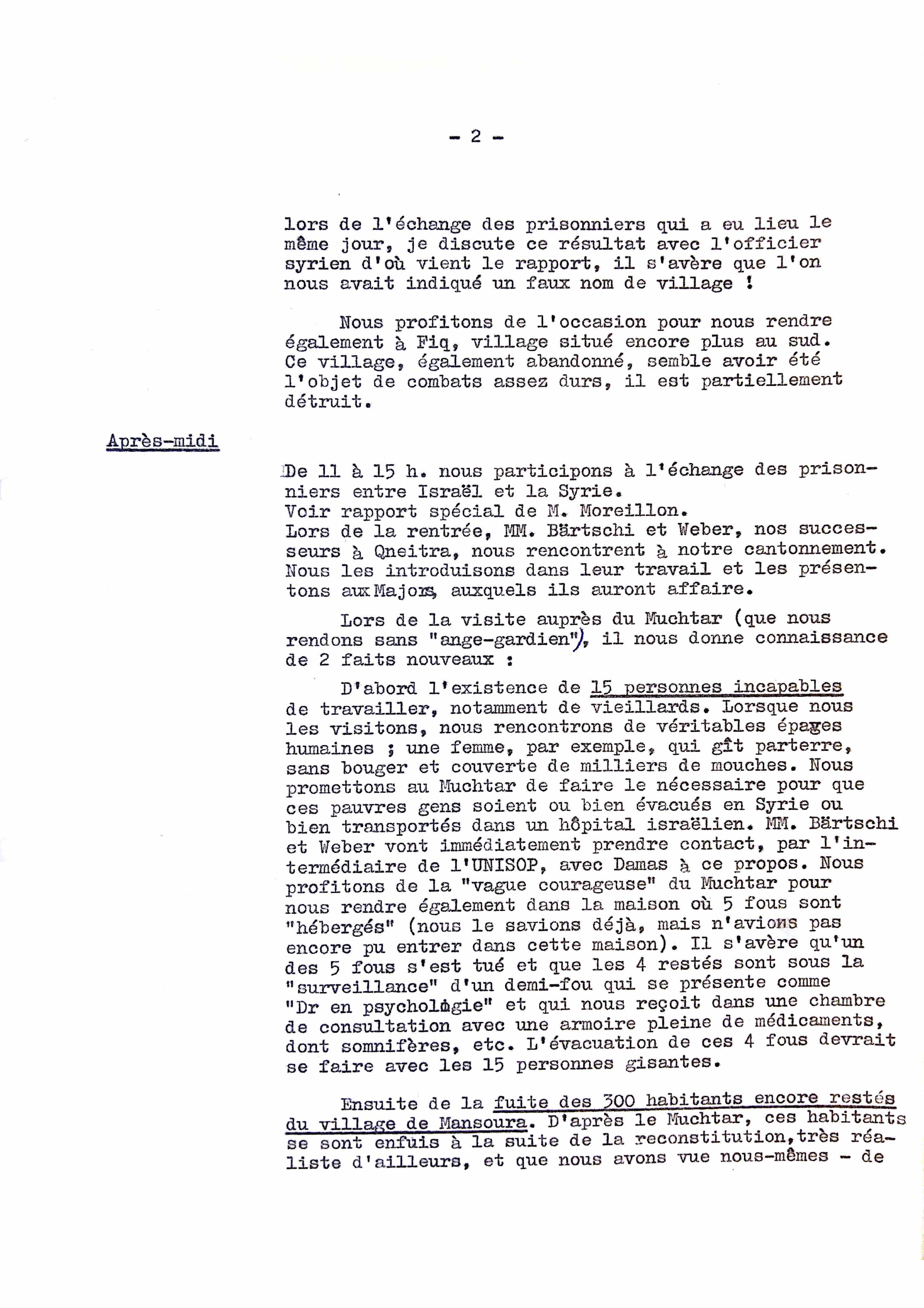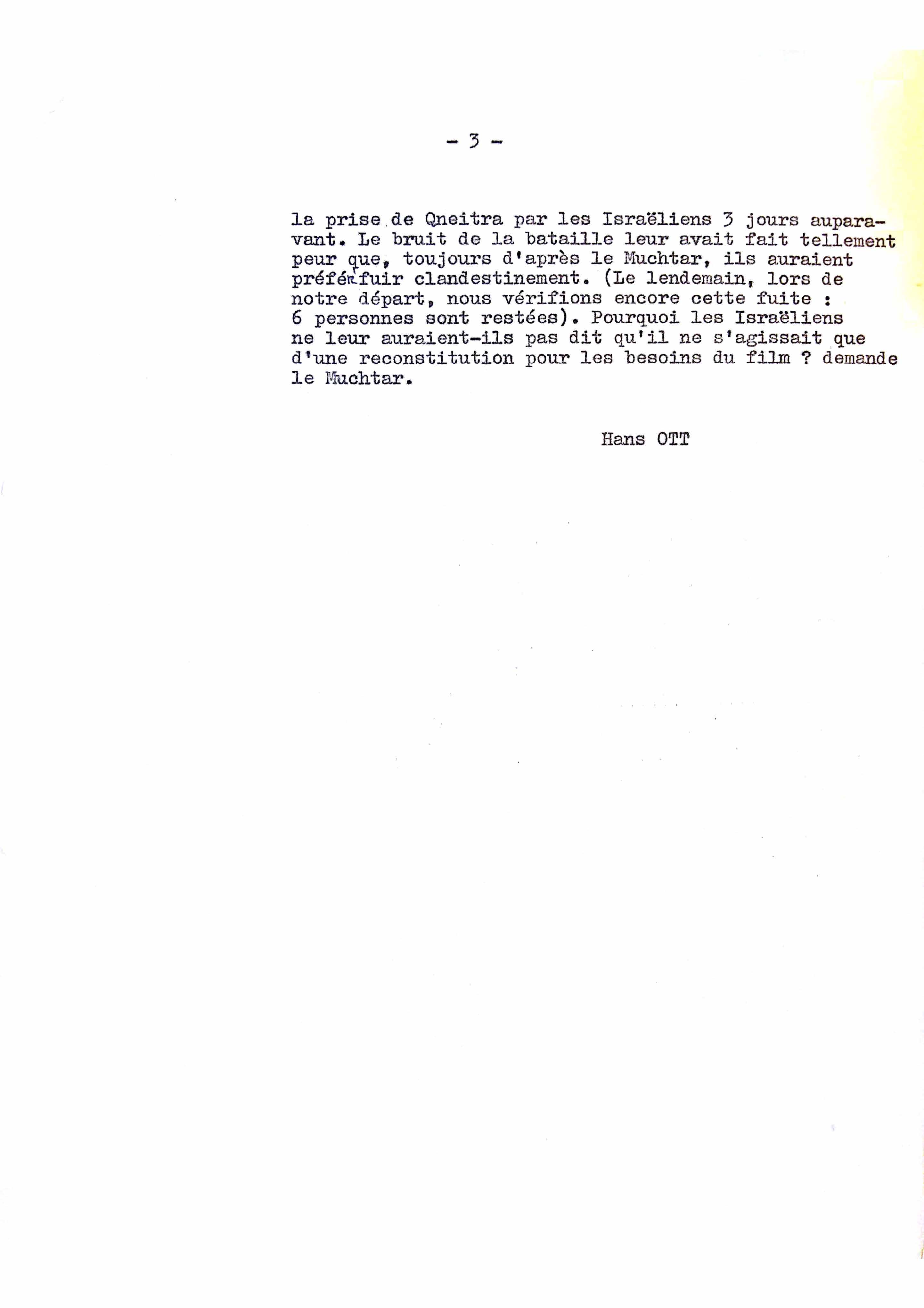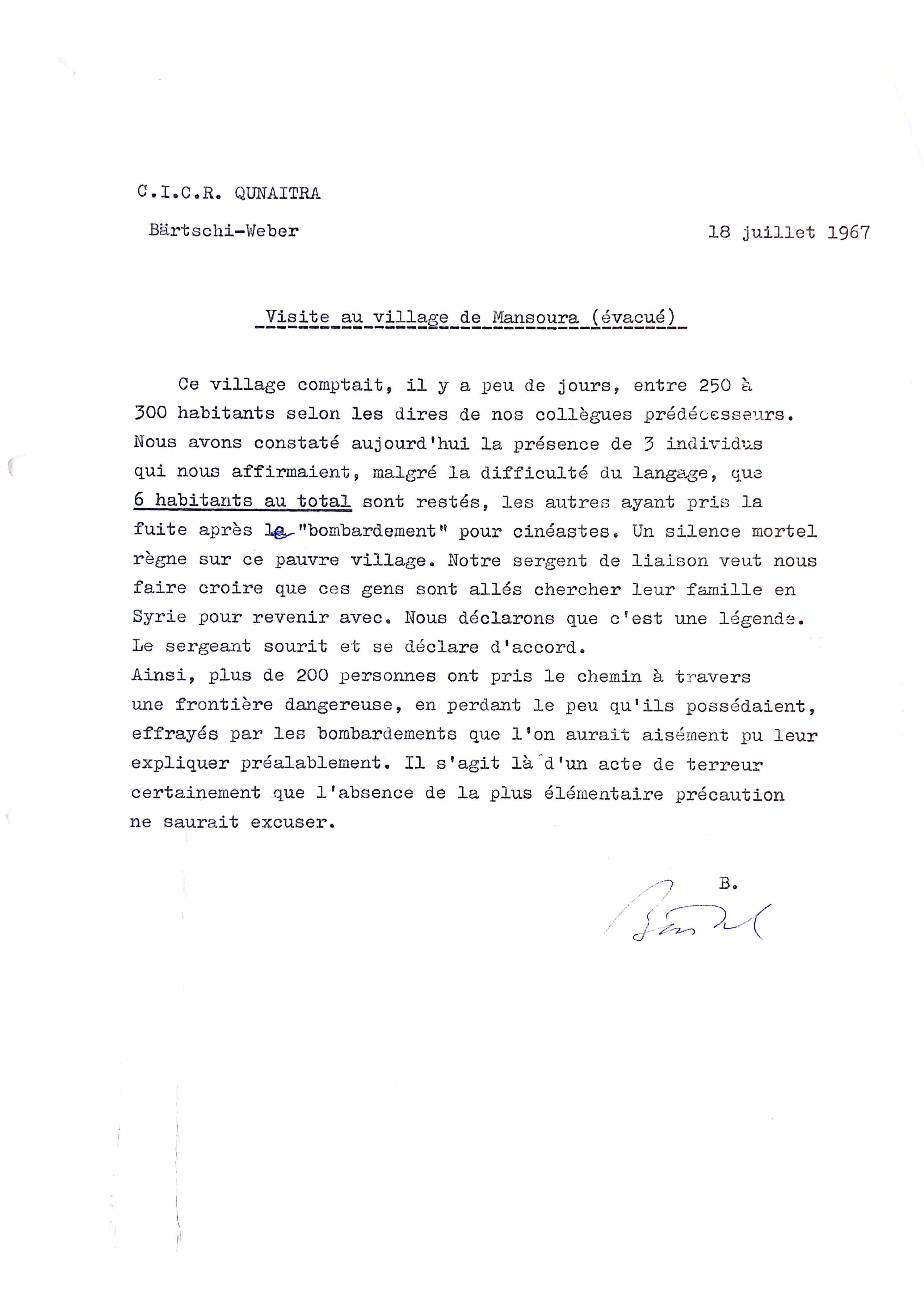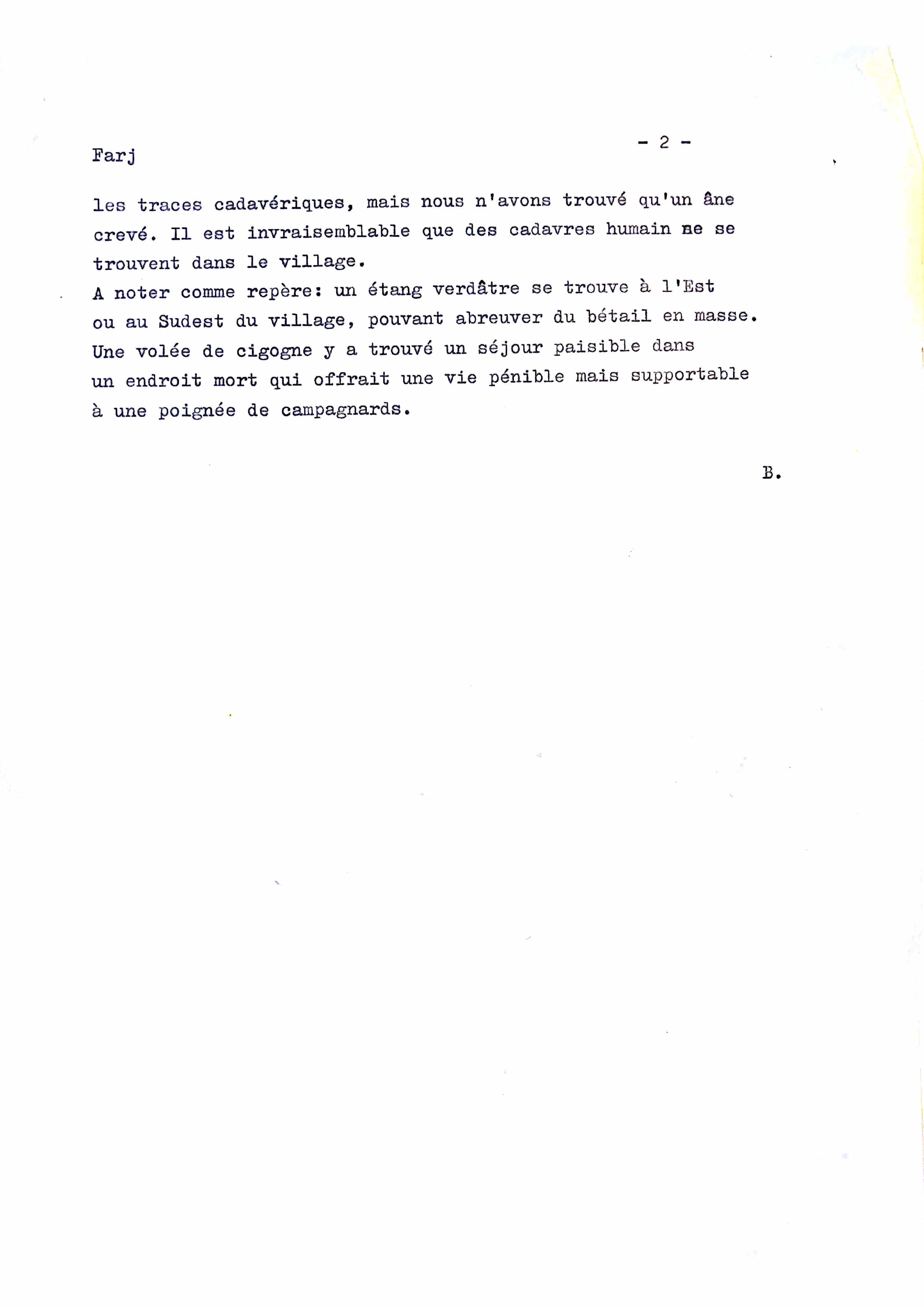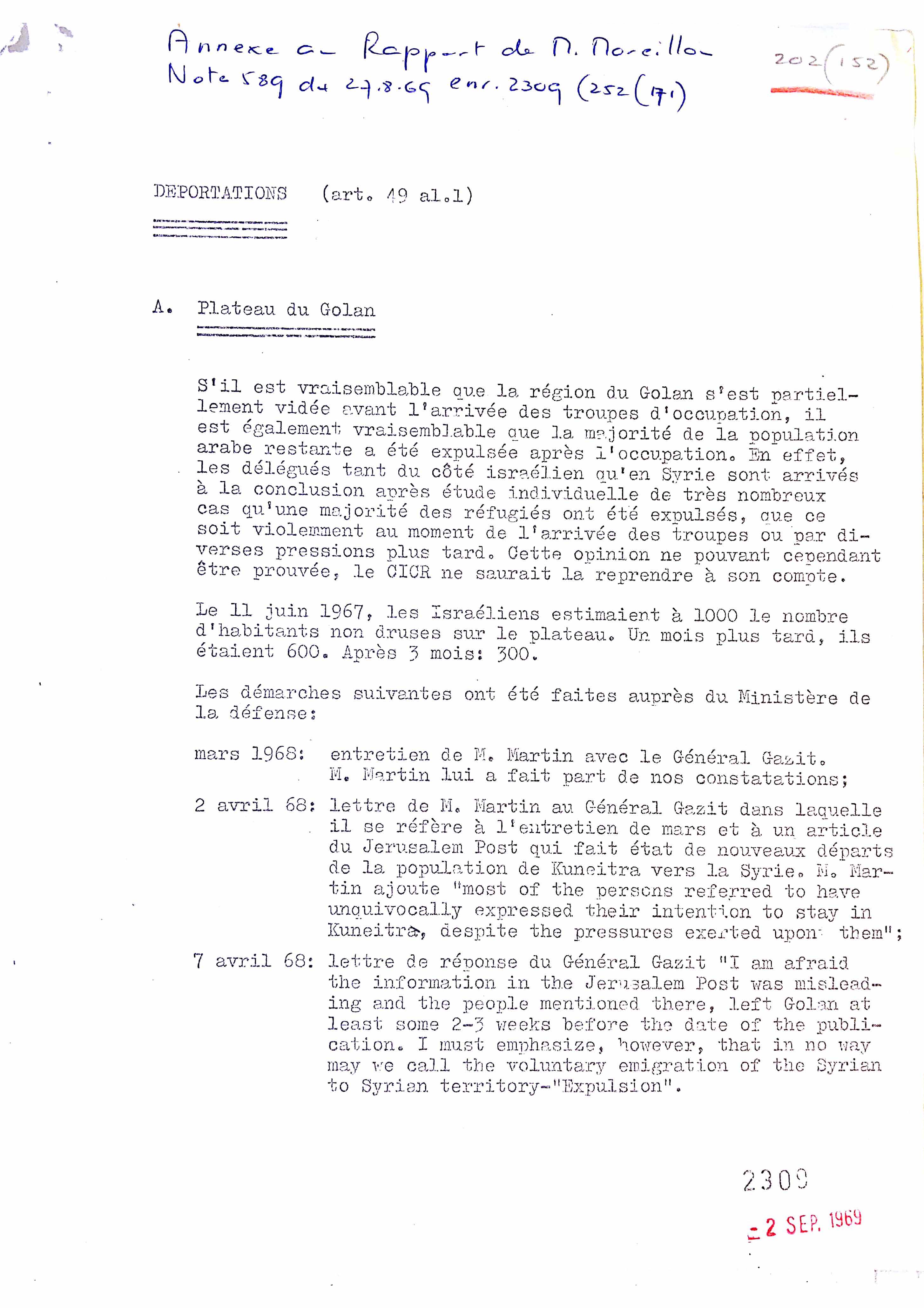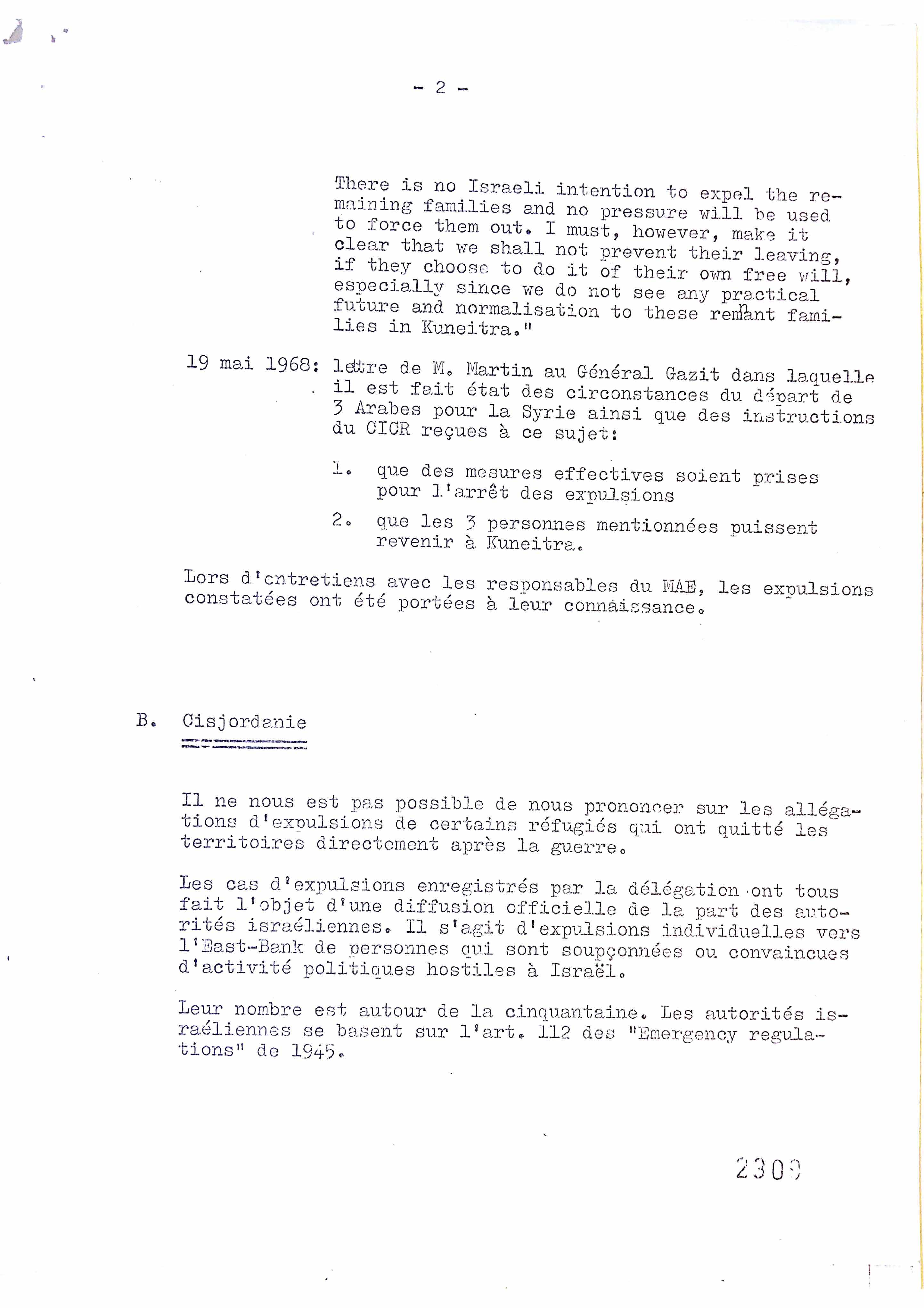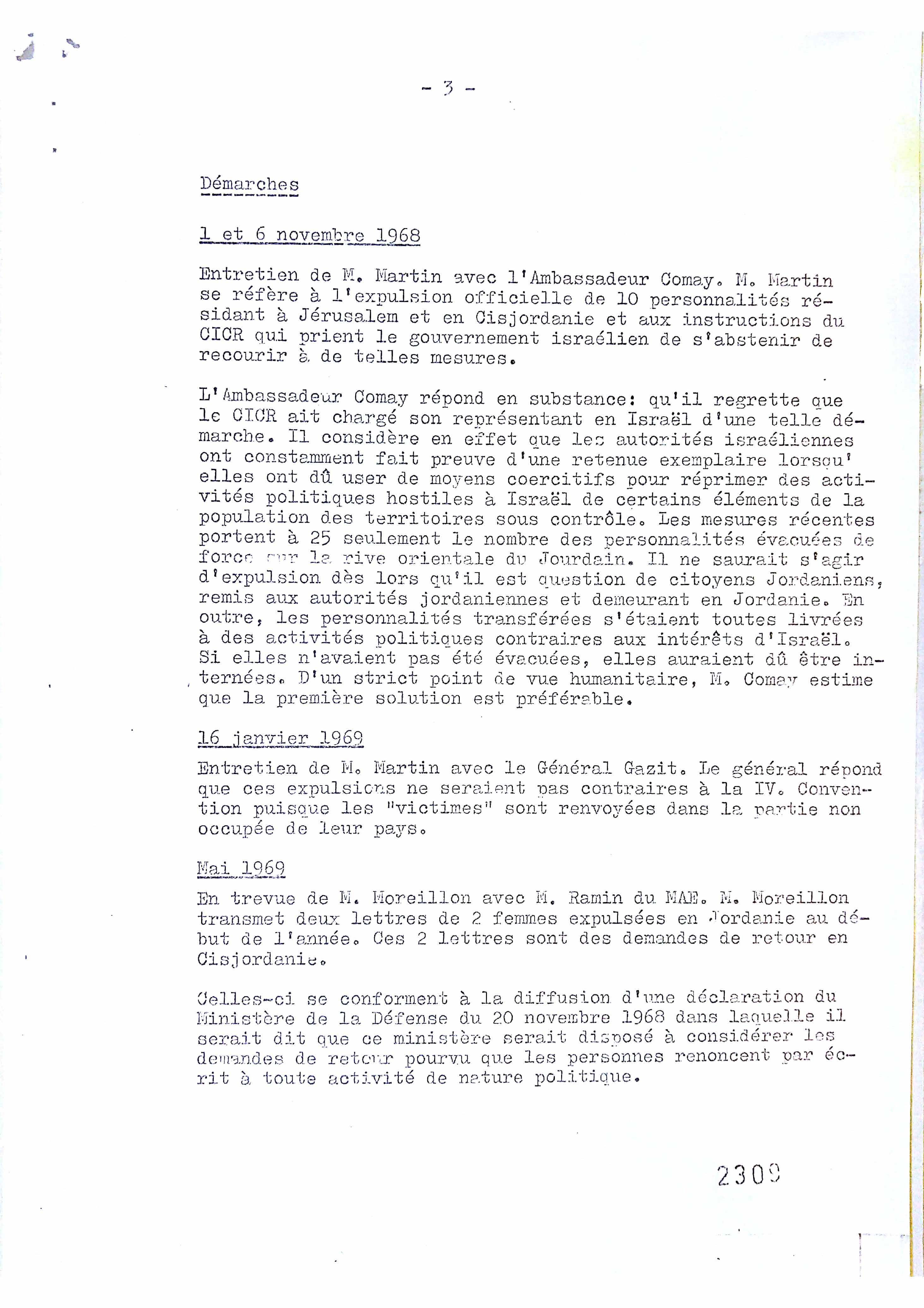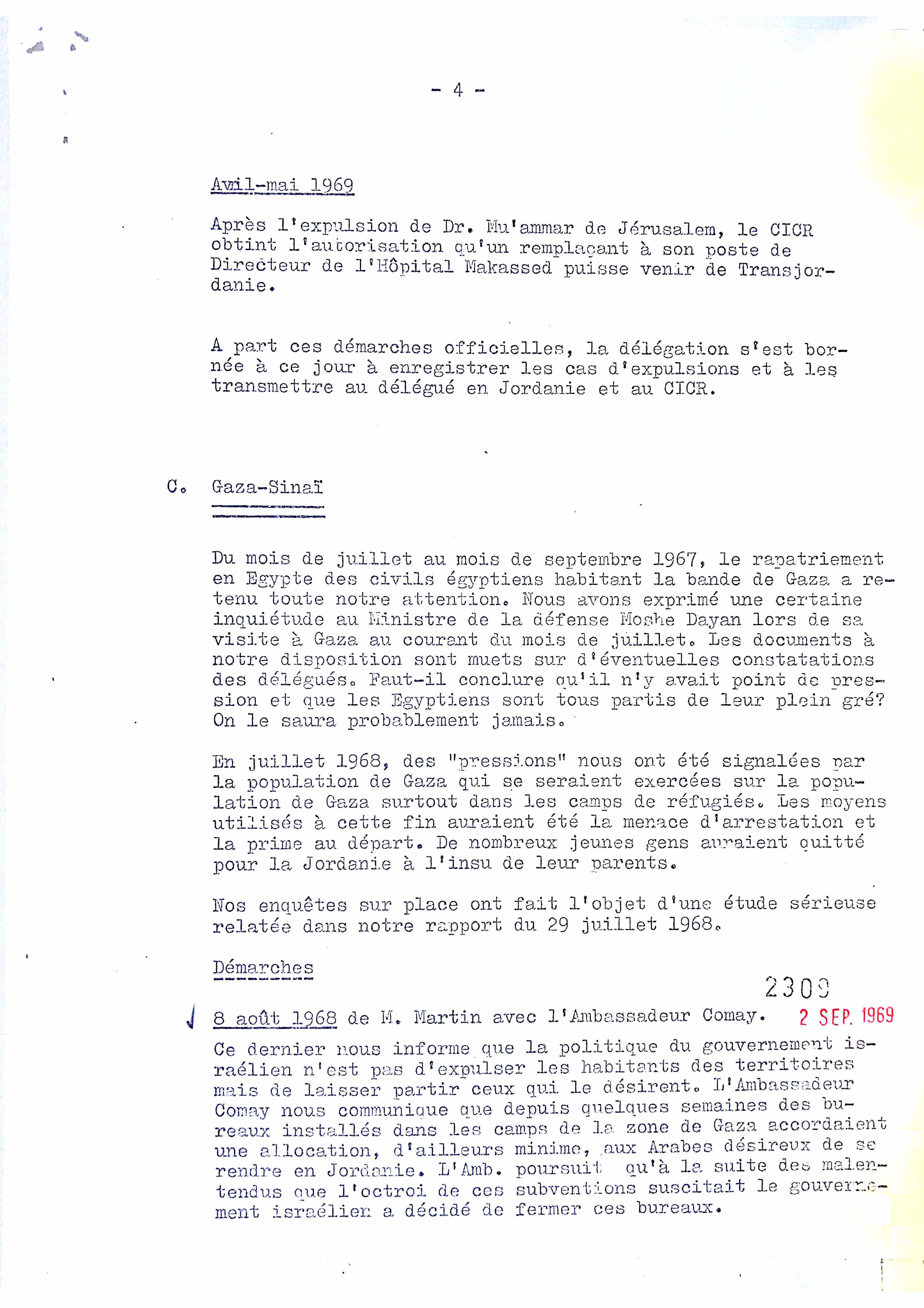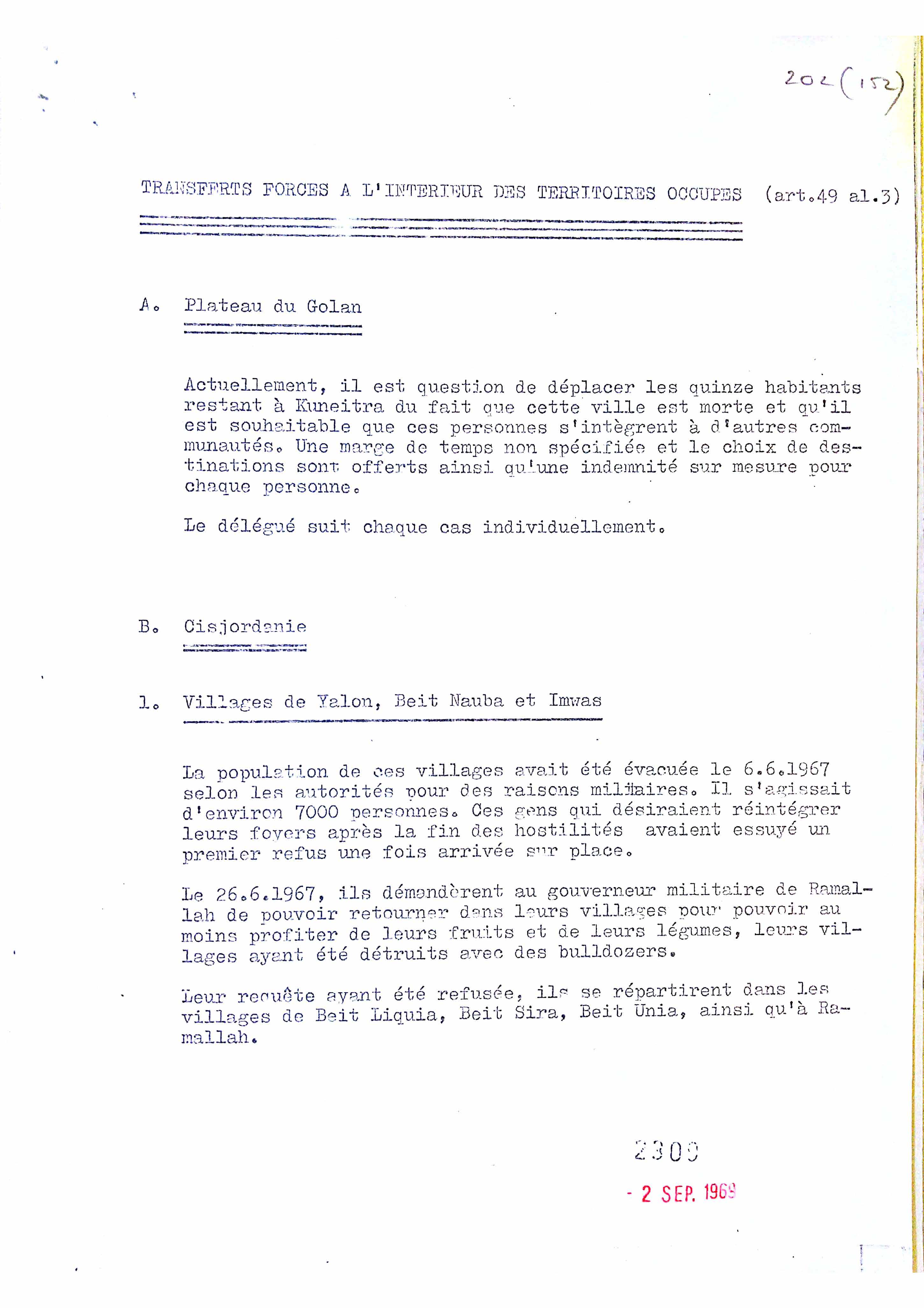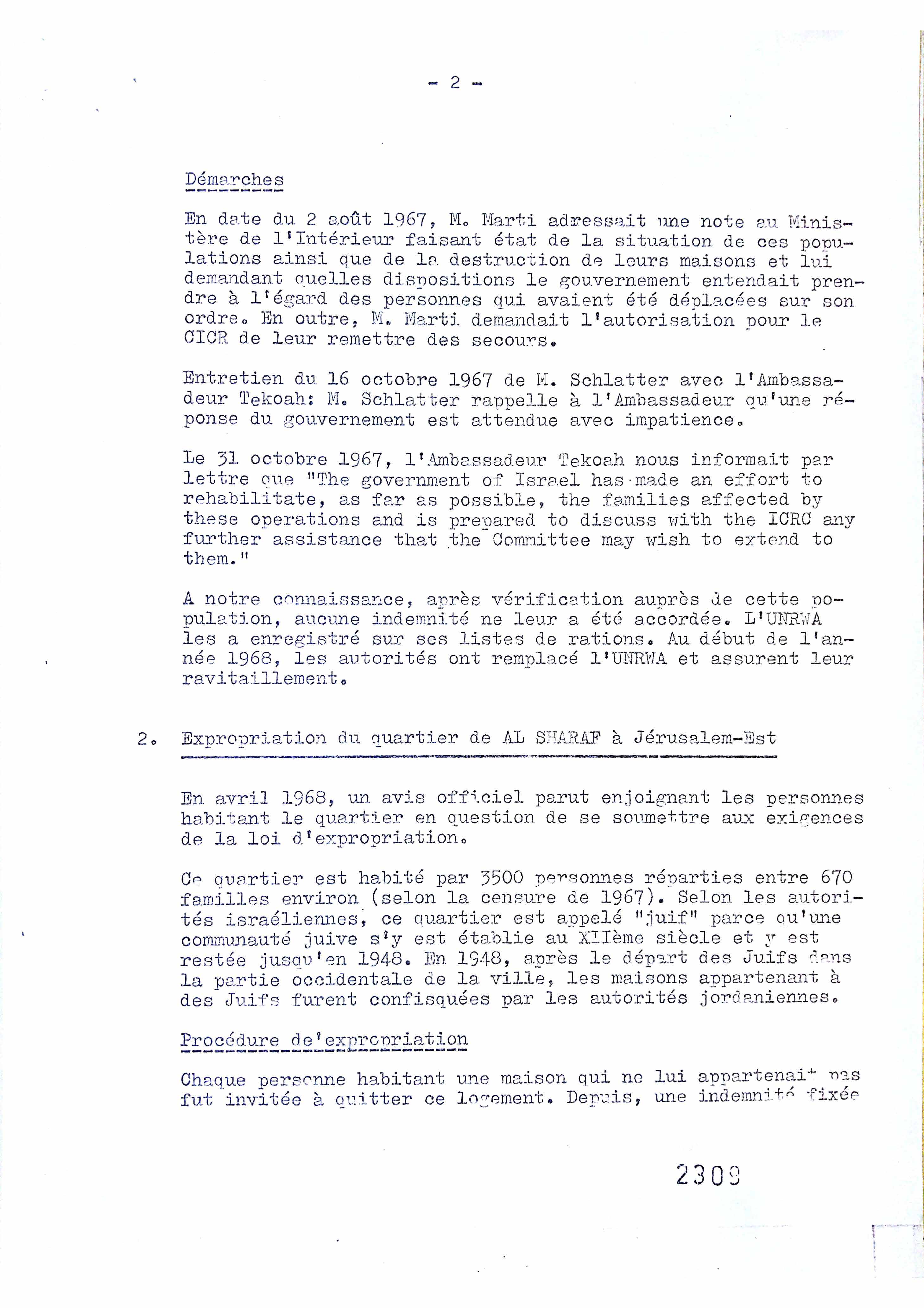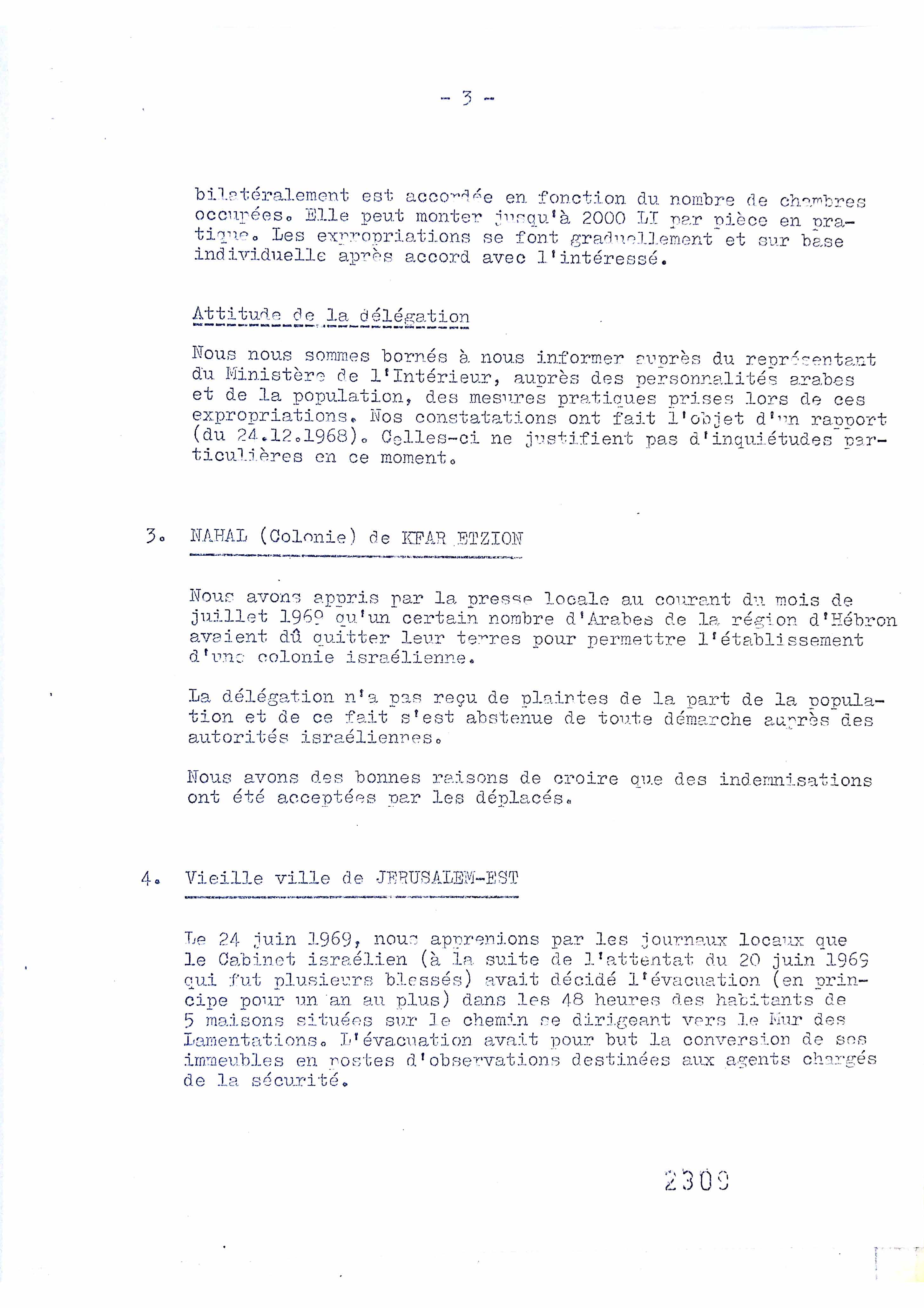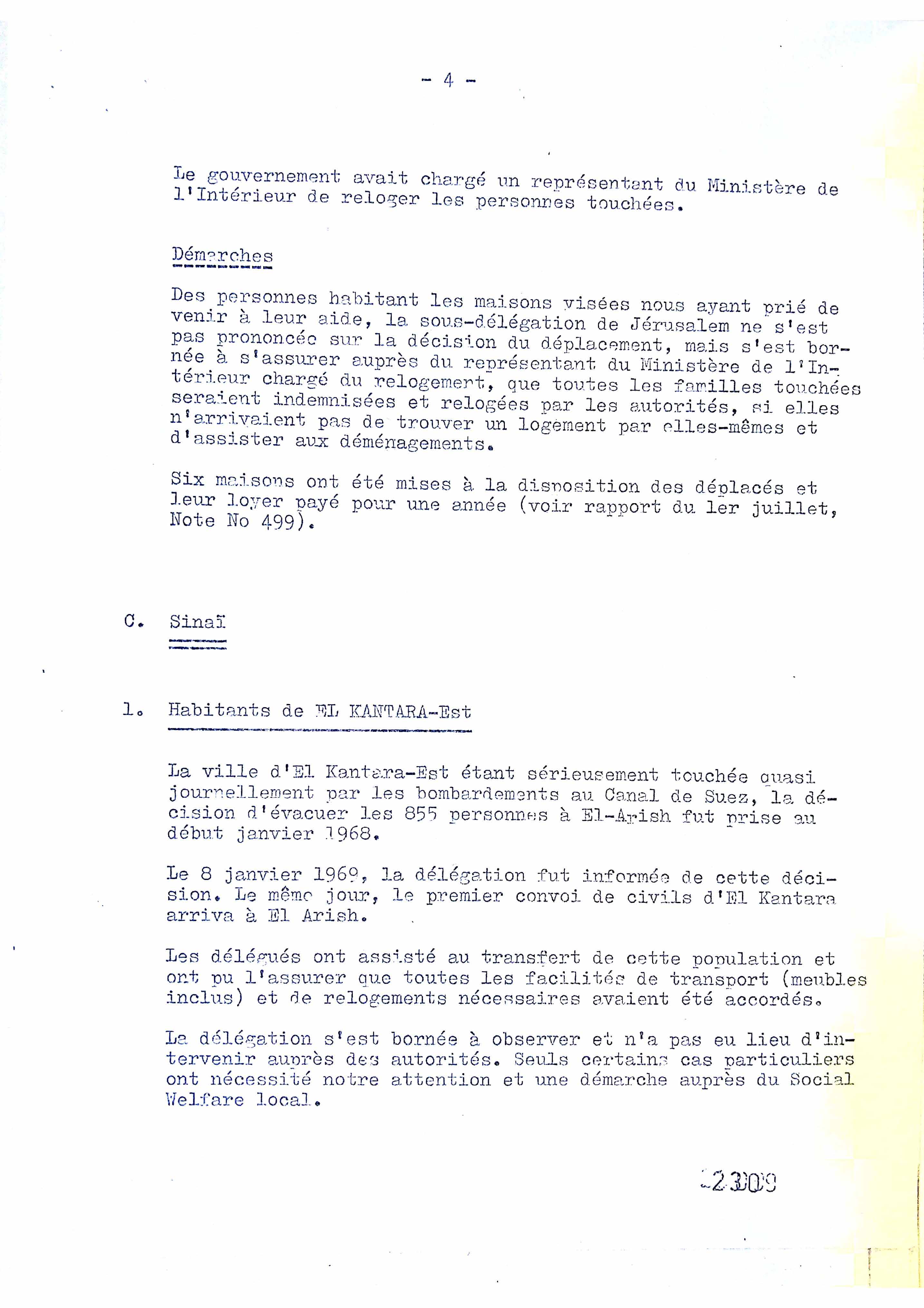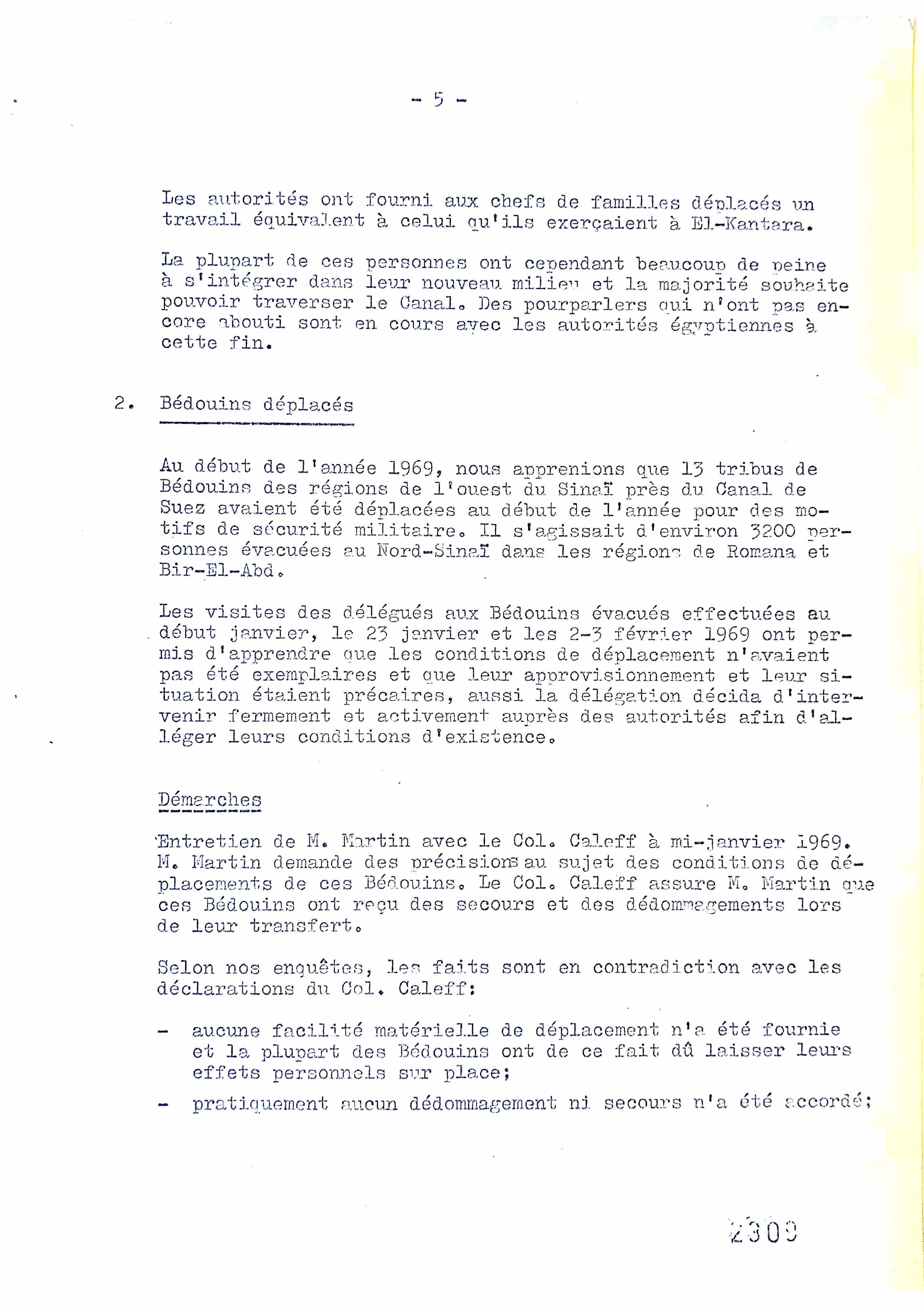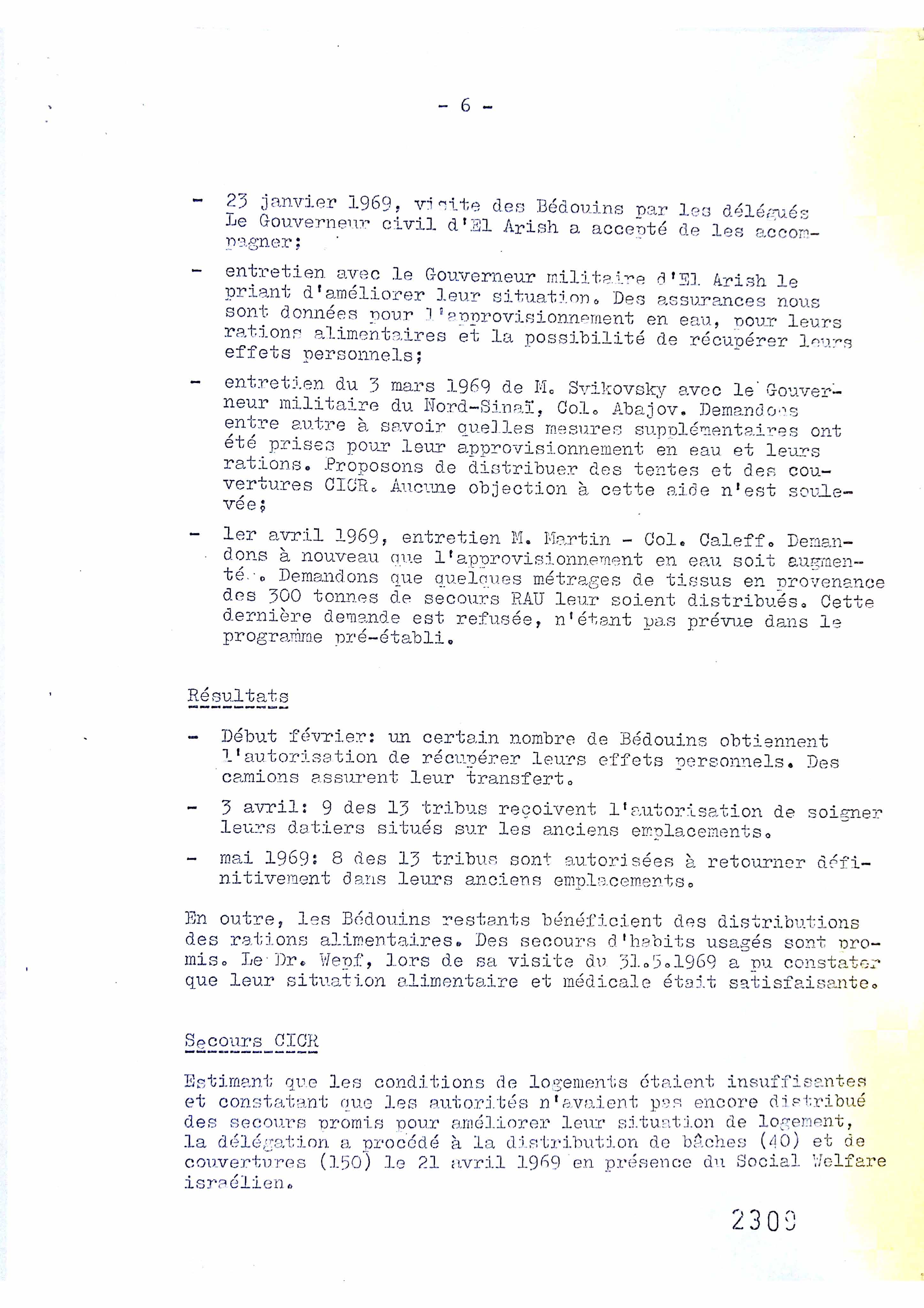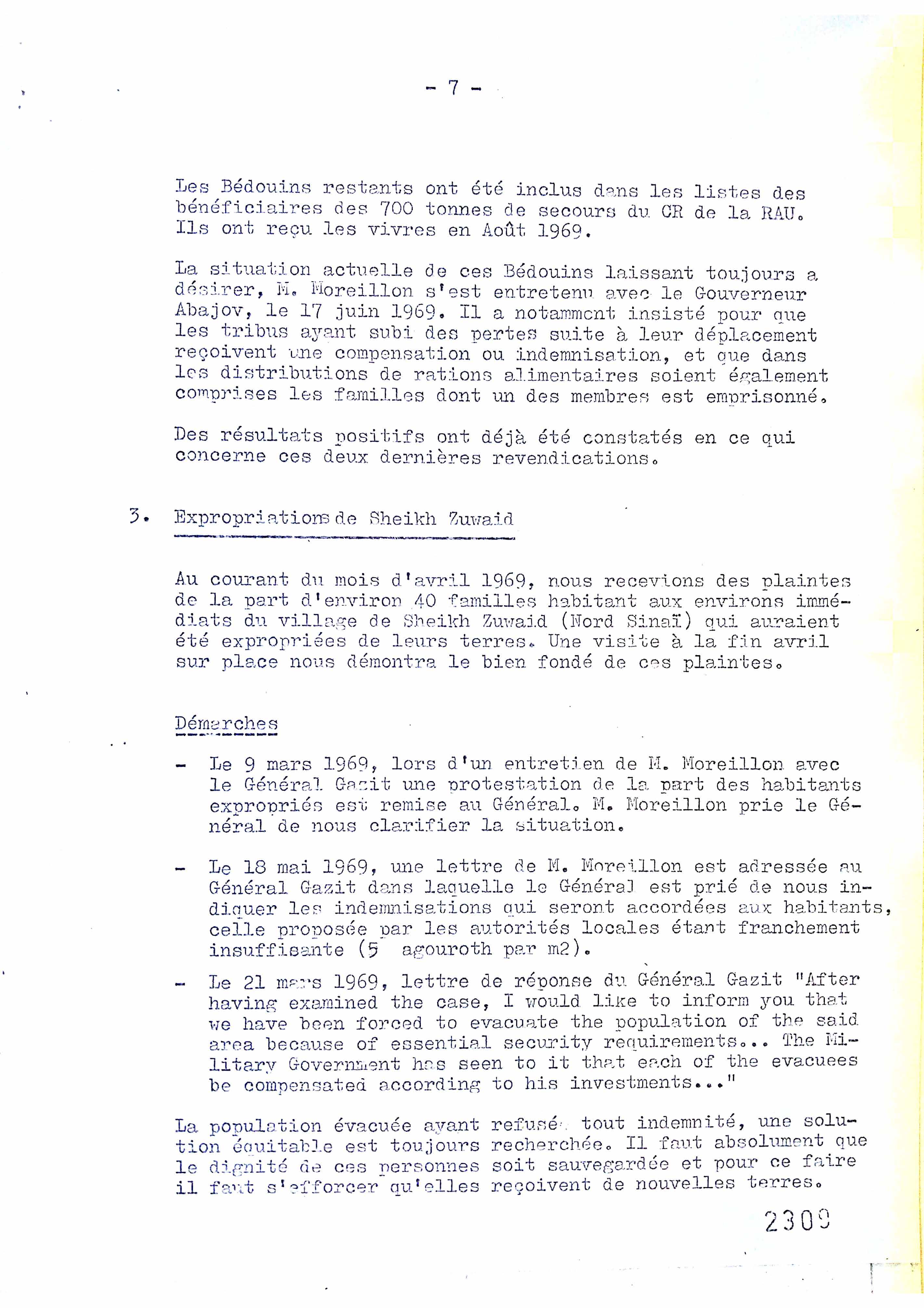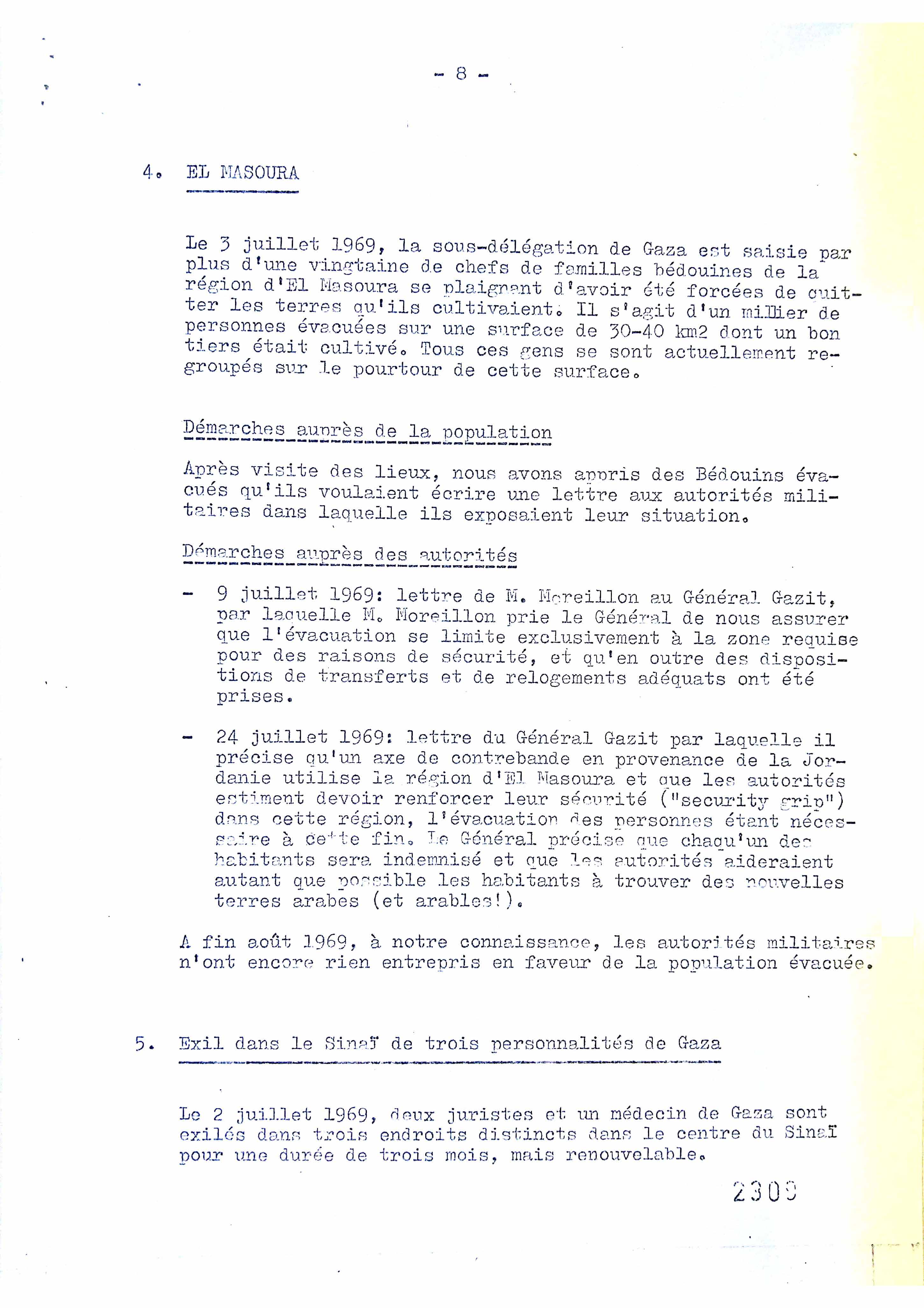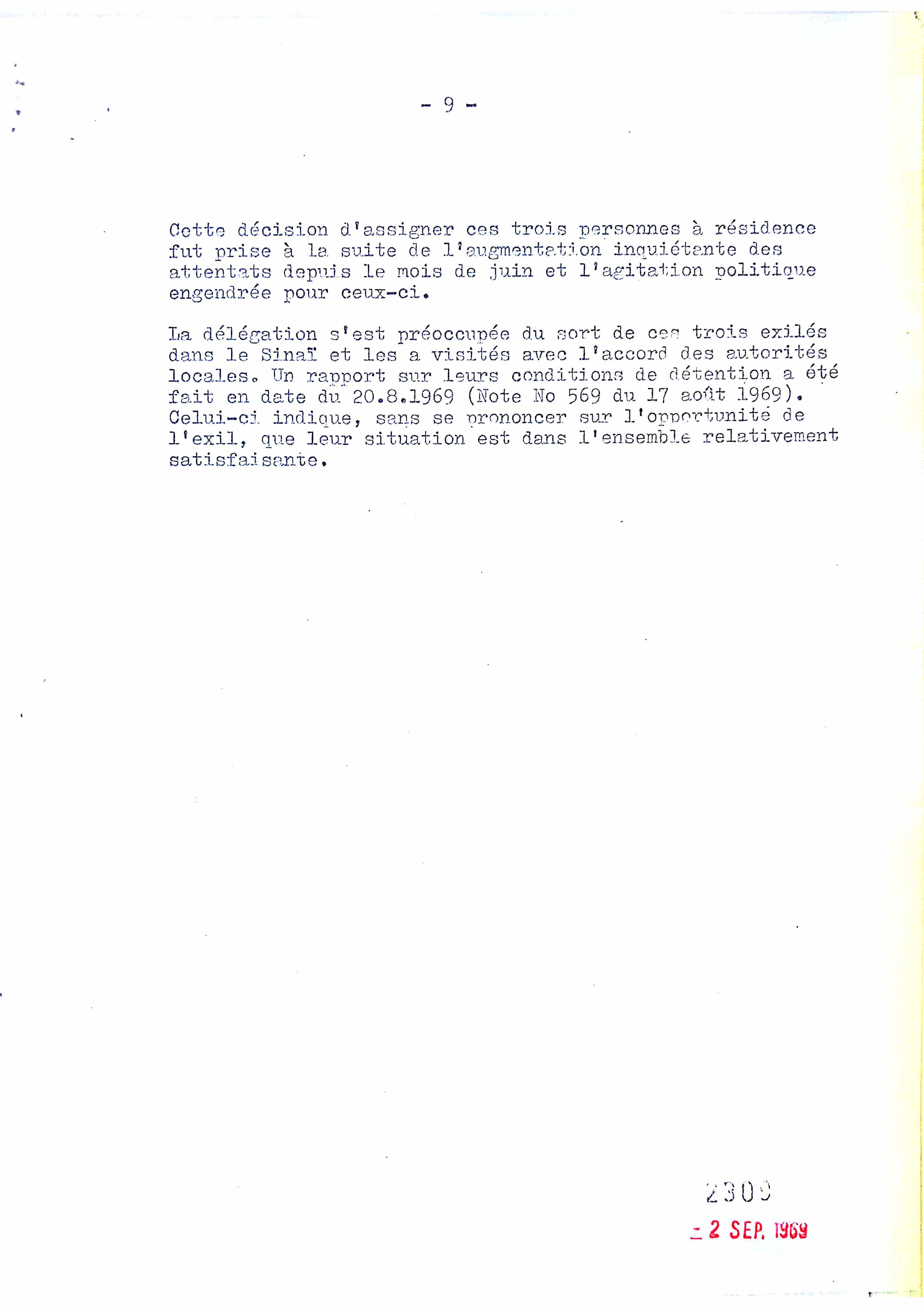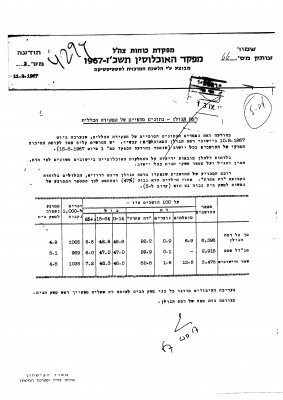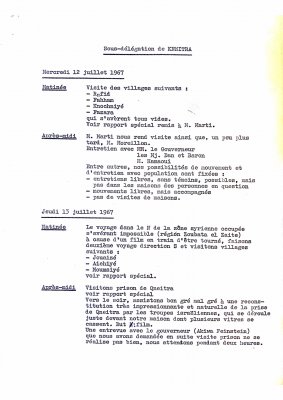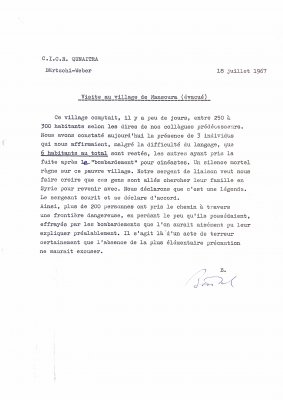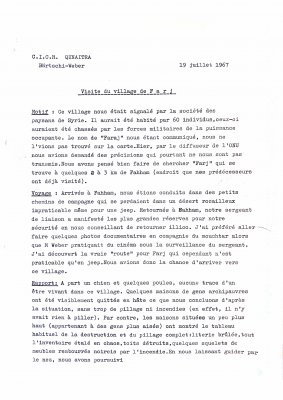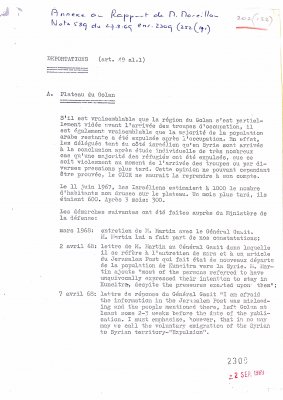Before the Six Day War, about 130,000 people lived in the Syrian Golan Heights. An Israeli census held in August 1967, three months after the war, showed the newly occupied area as having only 6,396 Syrian residents, the vast majority of them Druz. The fate of tens of thousands of Arab residents who lived in the area was quickly erased from public memory. They were largely overlooked in historical research as well. One of the only people to inquire about them was journalist Shay Fogelman, who wrote a story in Haaretz newspaper in 2010 about Israel’s efforts to empty the Golan Heights of its residents. Documents allocated by Akevot Institute at the archives of the International Committee of the Red Cross (ICRC), expose another aspect of the expulsion of Syrian Golan Heights residents.
The Golan Heights were seized on June 9 and 10, 1967, after three days of shelling that resulted in residents fleeing north. Syrian forces withdrew soon after, and Quneitra, the largest city in the area, with a population of 20,000, and home to the Syrian headquarters, was taken by the IDF. There are different estimates, none of them reliable enough, as to how many Syrian residents remained in the Golan Heights after the fighting ended – from several thousand to tens of thousands. No census was taken until two months into the occupation. Far from public view, however, Israel implemented a policy designed to empty the area of its Syrian residents to make way for Israelis.
Israel instituted a military government in the area immediately, and entry into depopulated Arab villages was forbidden. The few residents who remained were put under curfew. In his story in Haaretz, Fogelman presents accounts of locals being rounded up in Quneitra and sent across the border to Syria. Elad Peled, commander of the Gaash Division, which conquered the southern part of the Golan Heights, sheds light on another aspect of Israel’s policy in those days – the physical destruction of the villages. In a document, which the DSDE has since closed for access at the Yitzhak Rabin Center Archive, Peled says a decision was made to “destroy the villages with bulldozers so they would have nowhere to return to.”
Documents collected by Akevot Institute at the archives of the International Committee of the Red Cross (ICRC) in Geneva, presented here, provide information about another dimension in the expulsion of Syrian Golan Heights residents at the time. These documents offer a new perspective into the filming of The Six Days, a propaganda film produced by Israel in the months after the war. The generously funded film contained reenactments of some of the battles of the war and was a commercial success when it was released in theaters in March 1968. The press reported more than 750,000 Israelis watched it at the cinema. The ICRC documents reveal residents of the Golan Heights were not told the fighting would be reenacted for a film, and the fear induced by the shelling drove them to flee.
The ICRC archival documents are immensely important for two reasons: First, a small ICRC delegation opened an office in Quneitra shortly after the war and reported to the ICRC headquarters about what was happening in the area. The reports document the dire state of Syrian residents under Israeli occupation. Second, the vast majority of Israeli historical records about the fate of the people who lived in the Golan Heights are not accessible to the public. Even when these records occasionally surface, they are often blacked out.
This collection of documents from the ICRC archive (in French) turns the spotlight on the fate of the Syrian residents and on Israeli policy in the aftermath of the war.

